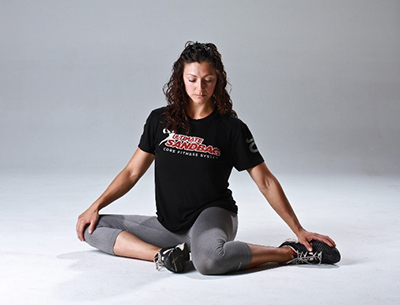Why Mobility Training Often Doesn’t Work
2024-07-9
Having been in the fitness industry not just as a coach, but as a student for almost 30 years has provided me to have some unique insights and trends that get missed by many. I remember that I even started going to continuing education programs in the industry when I was 16. Even then I knew this was a field I wanted to go into (not sure if I knew what I would be doing though) and I wanted to get a jump start on better understanding training. It didn’t hurt that a mentor of mine that worked with the Chicago White Sox strength & conditioning baseball staff recommended that if I had such interest to check out continuing education.
Of course at 16, almost everything went over my head. However, it did give me the awareness that training was more than just what muscle you trained and counting to 10. Trust me, not every program I went to was amazing. There were plenty I attended and thought were great at the time, but the science ended up not supporting the practices, or the clients just didn’t like the practices, sometimes both.
I tell you this because I remember when the answer to all movement issues was stretching. We would have to spend almost half the training session stretching people to make sure they could move well, to “fix” all their aches/pains, and so forth. Yet, people often didn’t improve that much and it felt like all the time we were doing the same stretching.
Does stretching not work? Stretching does work, but you have to be very consistent and on top of doing it. Most clients only stretched when they trained with me, so it made stretching look like it didn’t work. That led to many professionals, including myself for a period, thinking that stretching had no place and was rather ineffective.

How most probably feel with their stretching programs.
In my opinion, this led to a lot of the rise of mobility training. Now, to be fair, there are many great things about mobility training and mobility training IS different than just stretching. To be clear though, you never have to choose one or the other, that is something we will get into as well as they both have benefits often in different ways.
My first continuing education class I took on mobility training was back around 2002. It was led by a chiropractor who also had a large background in martial arts. I was largely amazed by how he moved, great fluidity and effortless action. Something that my body had never felt and so I was sold that THIS type of mobility training was the answer to everything!

While there was some benefit from those early mobility training drills and ideas I got, I didn’t connect one important dot. That was I was expecting in a few weeks that my clients and myself would be moving like the teacher had but forgot that we didn’t have the 20 years plus of martial arts training also behind us. You see, that is where many people go wrong with mobility training and has nothing to do with complex science.
I don’t think badly of the former gymnasts, martial artists, 10 plus year yoga instructors, that are on social media talking about mobility training, however, we often forget that many of their results both didn’t happen overnight (usually with years worth of training) and that it wasn’t probably the 5 mobility training drills they are showing in a single post that gave them such great mobility, but the years of diligent comprehensive training.
My point is that so many people quickly jump from one mobility training program and exercise to another, thinking that there is a “magical” drill that if they perform it, it will solve all their mobility needs. Just like building any other fitness quality, it takes time, consistent practice, and the right intent. There IS also a need to know how we can make our mobility training more effective and efficient.
The other issue that has caused mobility training not to yield the results people hope is how we try to break everything down in individual components, training them separately, as well as totally missing key elements that help make our mobility drills effective. So, what does good mobility training have to involve? Well, it should have all these elements, not necessarily all at once, but should be moving to integrate all over time…..
-Training in a comfortable up to slight discomfort, but never painful or intense ranges of motion.
-Integration of the entire chain of the joint, for example, shoulder mobility should involve the core, the hips, the lower body, and the neck/thoracic spine NOT just the shoulder itself.
-Mindful breathing, this may start with just being aware of the breath, moving to trying to use diaphragmatic breathing, eventually, timing breath and movement together.
-Working through more than linear patterns, circular and diagonal patterns are at the root of some of the most problematic areas like shoulders and hips, yet, most focus on only very up and down, back and forth directions.
-Intentionally trying to soften the body, the more we try to relax and “soften” our body as we use mobility training, the more we start to feel greater ranges of motion becoming available to us. This is why paying attention to the amount of discomfort we are causing is key to we don’t create tightness.
Drills like we show in our Myofascial Integrated Movement (MIM) really highlight a lot of these qualities to show how we make this a practice that actually makes an impact. It doesn’t happen overnight, but if you can be consistent and intentional, it happens in very powerful ways. Mobility training can be very helpful and doesn’t have to take up a lot of time, but you have to learn what makes it more efficient.
You can find out more and save 30% on our MIM programs and our Science Of Breath Course HERE with code “july30” for a few more days. Yes, we did have to push back our release of our Mobility Balls a few days due to website issues, but hope to have those available before the end of the week!
© 2026 Ultimate Sandbag Training. Site by Jennifer Web Design.







